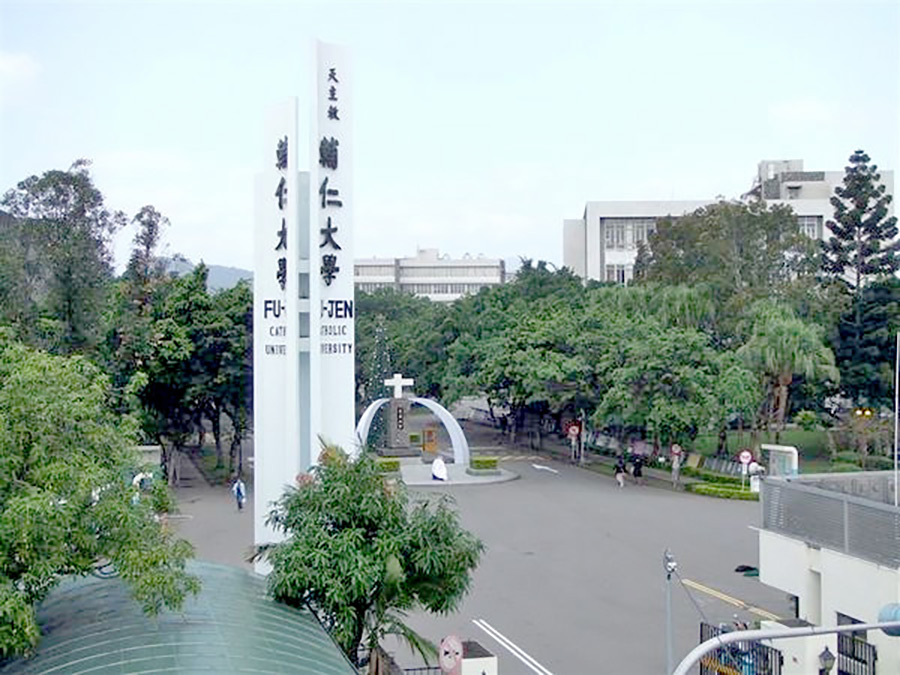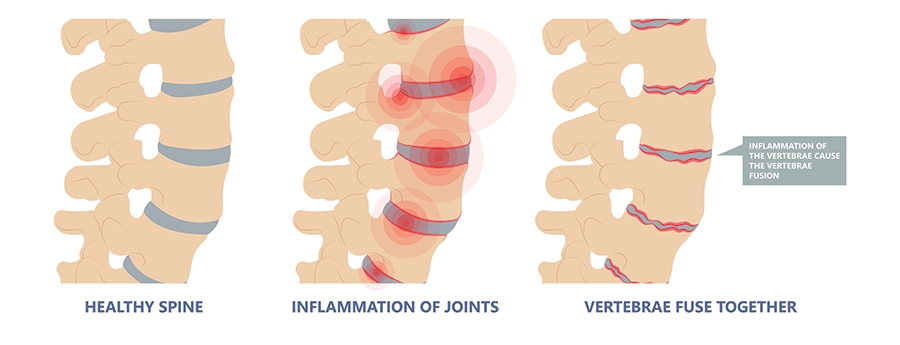- Axial spondyloarthritis (axSpA) is a chronic inflammatory condition affecting patients physically, psychologically, and socially.
- A new initiative known as the Taiwanese Map of Axial Spondylitis (TMAS), led by Chang-Youh Tsai at Fu Jen Catholic University Hospital and other researchers in Taiwan, explores the unmet needs of Taiwanese people living with axSpA.
- TMAS provides insights into the patient experience, helping rheumatologists to adjust treatment strategies and improve outcomes.
Axial spondyloarthritis (axSpA) is a chronic inflammatory disease that affects the joints, primarily those in our back. AxSpA is divided into two subtypes, radiographic axSpA (also known as ankylosing spondylitis or AS) and non-radiographic axSpA (nr-axSpA). The distinction between these types is the ability to visualise inflammation or any evidence of structural damage of the sacroiliac joints, located in the back, on X-rays.
The European Map of Axial Spondyloarthritis (EMAS) initiated by Dr Marco Garrido-Cumbrera in Spain previously conducted a large-scale survey across 13 European countries, involving 2,846 patients, to better understand the physical, psychological, and social impacts of the disease on patients. Since then, this research initiative has been expanded internationally to assemble the International Map of Axial Spondyloarthritis (IMAS) – this study includes Taiwan, a country in which axSpA affects more than 20,000 patients.
The TMAS initiative
Chang-Youh Tsai at Fu Jen Catholic University Hospital, in collaboration with researchers across Taiwan, has successfully led the first study focused on collecting patient-reported outcomes and perspectives from those living with axSPA in Taiwan, completing the Taiwan Map of Axial Spondyloarthritis (TMAS).

The TMAS study, conducted from July 2017 to March 2018, involved an online survey of 112 axSpA patients across 15 regions across Taiwan. The research was supported by the Ankylosing Spondylitis Caring Society of Taiwan (ASCARES), a patient advocacy group which includes patients aged 20 years or older as well as legal guardians of younger patients. ASCARES provides educational resources and mental health support.
Only 37% of patients had spoken about their treatment goals to their physician.
The TMAS survey covered various aspects of patients’ lives, including insights into diagnosis, physical health, treatment, lifestyle and more to understand how axSpA affects their quality of life (QoL) and how their condition is managed. The survey used validated tools such as The Bath Ankylosing Spondylitis Disease Activity Index (BASDAI) and Twelve Item General Health Questionnaire (GHQ-12) to measure patient insights and to assess disease activity and psychological distress in patients.
Psychological distress and disease activity
The survey revealed that Taiwanese patients had high disease activity, demonstrated by a mean BASDAI score of 4.9, measured on a scale of 0–10 with 10 being the highest disease activity. The BASDAI scale measures disease activity by assessing stiffness severity, pain, fatigue, and overall discomfort. The researchers found that 75.9% of patients having reported mild-to-moderate spinal stiffness.
Psychological stress was also significant in Taiwanese patients, with the mean GHQ-12 score of patients being 3.3, measured on a scale of 0 to 12, and 45% of patients having scored higher than 3, the threshold at which above or equal to was indicative of psychological distress.

The survey revealed the psychological burden was just as significant as the physical one; patients reported having experienced anxiety(25.9%), depression (23.2%), and sleep disorders (20.5%). Participants were most commonly afraid of suffering pain (70.3%), spinal stiffness (67.6%), and disease progression (57.7%). When asked about their treatment goals, patients reported that they hoped to eliminate pain (70.5%), reduce stiffness (67.7%), and reduce disease flare-ups (58.95). Surprisingly, only 37% had spoken about their treatment goals to their physician.
Less than 20% of Taiwanese patients received biologics, which is significantly lower than biologic use in the US, despite higher disease activity.
Interestingly, the TMAS survey demonstrated that Taiwanese patients have a shorter diagnostic delay compared to results presented by the EMAS, 3.0 ± 5.6 versus 7.4 ± 8.4 years. However, Taiwanese patients reported higher disease activity and significant psychological impacts, which led to reduced QoL and even career setbacks. The survey highlighted that 88.4% (99 patients) had experienced work-related issues due to axSpA, including sick leave, missing work for medical appointments, and considering career changes. Additionally, 42.9% of patients had to change jobs or make work adjustments (58.9%), and 59.8% reported having customised shoes and home adjustments (59.8%) to accommodate their condition. A higher BASDAI was mostly reported in patients who had their professional life impacted as a consequence of their disease and had more physical comorbidity and functional limitation.
Challenges in treatment and management
The treatment landscape for axSpA in Taiwan includes reimbursement of non-steroidal anti-inflammatory drugs (NSAIDs). However, reimbursement of biologics, a more targeted treatment option for patients with axSpA, is limited to those who test positive for human leukocyte antigen (HLA)-B27, a genetic marker strongly associated with axSpA diagnosis, and meet other stringent criteria. This largely limits eligibility for biologic use in Taiwanese patients. Biologics specifically target molecules in the immune system that play a key role in the inflammation observed in axSpA, making them better at controlling symptoms and slowing disease progression.

Yu tptw, CC BY-SA 4.0, via Wikimedia Commons
Out of 49 patients who reported their HLA-B27 status, 35 were positive out of 112 patients surveyed. The survey revealed that less than 20% of patients received biologics, which is significantly lower than biologic use in the US, given the high disease burden of the population. The pharmacological treatment for disease management or delayed diagnosis could be responsible for the high disease burden in these patients.

The TMAS also reveals gaps in the healthcare system’s approach to axSpA management. Of the 112 patients, 45.9% were diagnosed by orthopaedic specialists, while only 36% were diagnosed by a rheumatologist. This suggests an ineffective diagnostic process as rheumatologists are the specialists best equipped to manage axSpA. The survey reported that most patients were not directly referred to rheumatologists following diagnosis, contributing to delays and potentially worsening patient outcomes; only 28.6% had seen a rheumatologist before being diagnosed. Less than 50% of the patients with axSpA reported being managed by a rheumatologist.

Call to action
The TMAS highlights the need for better management of axSpA in Taiwan, especially in improving access to rheumatologists and optimising treatment strategies. The findings emphasise the importance of timely diagnosis and the need for primary healthcare providers to play a more active role in referring suspected axSpA cases to specialists.
Overall, the TMAS provides valuable insights into the unmet needs of Taiwanese patients with axSpA, offering a perspective that could guide future efforts to enhance patient care and outcomes.

What inspired you to conduct this research?
As rheumatologist physicians, we think ankylosing spondylitis and allied diseases are neglected by the health administration. As a result, there is not much awareness regarding axSpA in the general population.
How will this research be implemented clinically by rheumatologists?
TMAS results and recommendations can be submitted to the government’s health administration as a reference for improving the governmental strategies against axial spondyloarthritis. On the other hand, advocacy for early awareness of the disease can be carried out by rheumatologist physicians and their teams to patients in outpatient clinics as well as in communities.
Based on the findings of the TMAS study, what do you believe are the most urgent changes needed in the management of axSpA in Taiwan?
Taiwan’s health administration restricts the prescription of non-steroidal anti-inflammatory drugs by rheumatologist physicians. I believe this restriction is inappropriate and should be removed. The obligative needs of biologics and novel small target-synthetic disease-modifying anti-rheumatic drugs in axSpA patients ought to be conceptualised in the general population and the health administration in this country.












